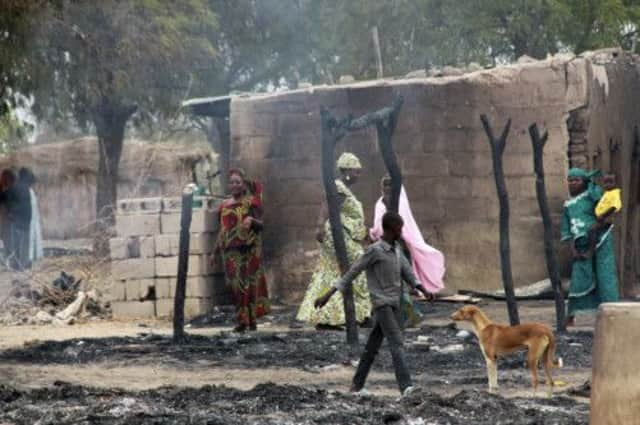Nigeria: Army’s denial it turned on civilians challenged


The release of photographs by Human Rights Watch came as foreign journalists under a military escort finally entered Baga, a fishing village on Lake Chad to which officials have had limited access since the killings.
The evidence directly contradicted military claims of limited damage to the town, raising new questions about security forces consistently accused of using excessive violence in trying to put down an Islamic insurgency that has raged across Nigeria’s mainly Muslim north since 2010.
Advertisement
Hide AdAdvertisement
Hide AdResidents said soldiers targeted civilians in their retaliation, setting fire to homes.
“I lost everything after soldiers came and set my house ablaze,” said Ibrahim Modu. “They met me outside, walked into my house and put it on fire, after which they told me to leave so that I don’t get burnt.”
Another witness, fisherman Abdullahi Gumel, said he still could not find one of his sons, days after the attack. “Things have calmed down for some days now, but we are still burying the dead almost every day,” said Mr Gumel.
Human Rights Watch (HRW)said an analysis of satellite imagery before and after the attack led them to believe the violence destroyed some 2,275 buildings and severely damaged another 125. The photographs, which HRW released to journalists, showed tell-tale black splotches in the town left behind by massive fires. The images also suggested the violence occurred on about 16 or 17 April, judging from plumes of smoke seen rising from the town, Human Rights Watch said.
“The Nigerian military has a duty to protect itself and the population from Boko Haram attacks, but the evidence indicates that it engaged more in destruction than in protection,” said HRW Africa director Daniel Bekele. “The glaring discrepancies between the facts on the ground and statements by senior military officials raise concerns that they tried to cover up military abuses.”
Officials with Nigeria’s military could not be reached yesterday. However, a brigadier general in the region previously said members of Boko Haram, an Islamist network, used machine guns and rocket-propelled grenades in the assault, blaming that weaponry for the fires. Extremists earlier had killed a military officer, officials said.
The military said extremists used civilians as human shields during the fighting, indicating that soldiers opened fire in neighbourhoods where they knew civilians lived. On 23 April, a military statement said “about 30 thatched houses” caught fire in the crossfire, something contradicted by the satellite images and what a journalist who visited Baga on Tuesday saw.
Officials could not offer a breakdown of civilian casualties versus those of soldiers and extremist fighters. The Nigerian Red Cross later said at least 187 people had been killed.
Advertisement
Hide AdAdvertisement
Hide AdPresidential spokesman Reuben Abati said authorities had received reports by the military and emergency officials about the violence that criticised “a lot of misinformation being peddled about the situation in Baga.”
Still, president Goodluck Jonathan “said that what happened in Baga was most regrettable and unfortunate”, the spokesman said.